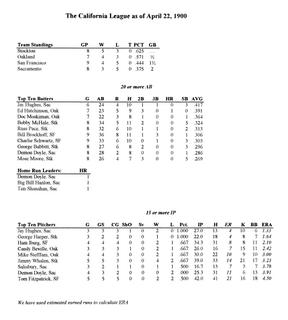A Research Request Made & Answered, 8-31-05
Carlos:
You've done it again - the site is just what's been needed for a long time!! It'll be one of the first things I check every day. Now I want some guidance from you - going to be in Sacramento for a few days in a couple of weeks and would like your opinion of the State Library. Think you told me in the past that their microfilm newspaper collection is vast (is it better that Cal-Berkeley?). Will I have to make prior arrangements to use the facility and am I limited in the amount of time I can use the viewers? Gotta go now and check "The Minor League Researcher." Bill Williamson
Bill, The State Library is my favorite in California. Berkeley microfilm seems to have been organized by someone who was more conversant with "lids of grass" than microfilm research.
The State Library has microfilm for most medium-sized towns and up, and they tend to be complete runs. (Cal Berkeley starts and stops). It really is one stop shopping, though copies cost 25 cents, rather than the thin dine at Cal. They don't have copy cards, so stop by a bank before you go to pick up a roll of quarters. There are two other problems with the State Library: Hours & organization: Hours: They are only open from 9:30 to 4:30, Monday through Friday, and are closed on weekends.
Organization: Newspapers are stored by county, and then alphabetically. So bone up on which cities are in which counties. Up north, they have many more counties than we have down here. What I did myself was sit down the day before I left and made a chart of counties, and the possible baseball cities within each county. I did that in front of a map.
One suggestion: Park away from downtown; i. e., on the other side of 30th Street, near L Street, I believe, cross under the expressway, and take the bus downtown. It will leave you only a couple of blocks way from the library, and costs less than a buck, I think.
Good luck, Carlos


